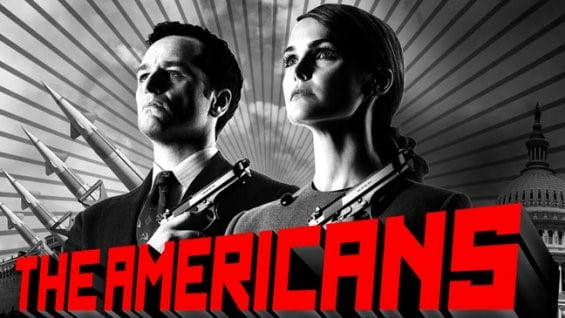The Cold War was a fascinating time in history because it pitted the superpowers of the United States and other allied nations against those of the Soviet Union and other communist countries. The governments spent decades trying to outdo one another regarding foreign policies, military force, science, and space. Although this is a straightforward explanation of the war’s impact, the Editors of History.com explain that after World War II, there was such a hostile atmosphere that no one nation was to blame and that even historians believe the period was inevitable (2009). It’s no wonder that television producers thought to create a dramatic program that fictionally focused on two Russian spies and their time in the United States. They completed dangerous assignments for their native country Russia. “The Americans” television program uses a mix of factual and fictional events to depict The Cold War connections between the superpower nations of that time.
“The Americans” was a period spy drama that focused on the later years of The Cold War, with Ronald Regan being President in the United States and Mikhail Gorbachev being part of the leadership of the Soviet Union for a large portion of the series. Although the show is fictional, it does provide some context on the misconceptions of the power dynamics between the United States and the U.S.S.R. As Edward Cohn explained in his The Washington Post article “What ‘The Americans’ gets wrong about the Cold War” “the show’s representation of Soviet espionage promotes a distinctly conservative narrative of the Cold War – one in which the Russian enemy is truly the “Evil Empire” engaged in the sabotage of American institutions” (2019). This is an interesting summation because it almost entirely ignores Hofstede’s cultural dynamics about both nations. (Although it should be noted that since the U.S.S.R no longer exist, this comparison is solely based on Russia and the United States).
According to Hofstede, “a high score in the masculine dimension indicates that the society will be driven by competition, achievement, and success, with success being defined by the winner/best in field” (2020). By comparing the U.S. and Russia, the U.S. outranks Russia 62 to 36. In this case, Russia’s low score pegs them as a more feminine society that does not want its members to stand out too much and expects that their achievements will be modest. Although this point can be debated, it can also be thought that the primary goals and values within Russian culture are for certain people to win big. At the same time, the majority of society is expected to be successful within their ranks. The higher score received by the United States determines that the U.S. is more concerned with any individual securing a win. This also relates to the power distance and individualism comparisons of the nations. While Russia has a higher power distance that distinguishes the country as one where few have power over the many, the United States considers itself more individualist. These themes repeat themselves on “The Americans” because time and time again, the audience witnesses how the show’s protagonists expect modest lives for themselves and consider their superiors as status symbols that do not necessarily have to categorize themselves with other Russians. Despite these cultural differences, the Cold War depiction in “The Americans” reveals that both the U.S. and the U.S.S.R were determined in their evolvement to advance their nations.
As Moran, Abramson, and Moran (2014) explain, “the U.S.S.R. did survive World War II, becoming a superpower that achieved some impressive accomplishments” (p. 494). The same occurred in the U.S. Both nations implemented and developed rigorous space programs. The editors of History.com state that the Soviets launched the world’s first artificial satellite, while the U.S. also did the same and created NASA. Also, the nations made accomplishments in healthcare, education, and other innovations. “The Americans” details all of this through a lens that is critical of both the Cold War and the actions of spies and government operatives.
Despite the cultural differences, the Cold War did come to an end in the early 1990s. Through various actions, the nations’ leaders eventually secured their administrations’ necessary support to bring the hostile actions of their countries to a stop. For “The Americans,” this meant getting caught and having to return home to a country that was all but foreign. In his article “Peace, Yes, but World Freedom as Well”: Principle, Pragmatism, and the End of the Cold War, Travis Cram suggests that President Ronald Reagan used his skills, diligence, and the rhetorical context of the situation to manipulate the war to a close. Although this generalizes the role that the President played, by analyzing Hofstede’s cultural country comparisons, can anyone doubt that the United States’ masculinity and individualism would lead to the end of a hostile political rivalry?
References:
Cohn, E. (2019, April 01). Perspective | What ‘The Americans’ gets wrong about the Cold War. Retrieved November 20, 2020, from https://www.washingtonpost.com/news/made-by-history/wp/2018/03/28/what-the-americans-gets-wrong-about-the-cold-war/
Compare countries. (2020, June 08). Retrieved November 21, 2020, from https://www.hofstede-insights.com/product/compare-countries/
Cram, T. J. (2015). “Peace, Yes, but World Freedom as Well”: Principle, Pragmatism, and the End of the Cold War. Western Journal of Communication, 79(3), 367–386. https://doi-org.ezaccess.libraries.psu.edu/10.1080/10570314.2015.1035747
History.com Editors. (2009, October 27). Cold War History. Retrieved November 22, 2020, from https://www.history.com/topics/cold-war/cold-war-history
Moran, R. T., Abramson, N. R., & Moran, S. V. (2014). Managing cultural differences. Abingdon: Routledge.
Pennsylvania State University (2020). Lesson 13: Eastern Europe and Russia. OLEAD 410: Leadership in Global Context. Retrieved from https://psu.instructure.com/courses/2075490/modules/items/29697221








